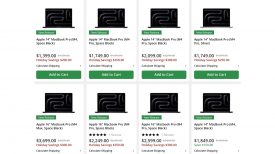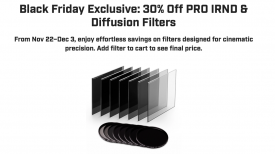By Rick Macomber and site editor Dan Chung:
The two of us have both been using the ikan D7w IPS field monitor for some time now. In this post we are both going to share our experiences.
Rick’s view:
IKAN D7W IPS PANEL MONITOR REVIEW from Rick Macomber on Vimeo.
First revealed at NAB 2012, this monitor comes with all the bells and whistles you would want packed into a nice 7 inch 1280 x 800 HD screen. It has waveform, vector scope, RGB parade, 4 panel view and priority view. Add to that peaking, pixel to pixel, false color, clip guides and DSLR scaling – all with a viewing angle of 178 degrees. There’s 3G SDI and HDMI loop thru, a headphone jack and a mini USB port for firmware updates. I tested a BP-950G battery which lasted about 3 1/2 hours.
I wish the D7w exterior had been designed with the same rubbery skin they used on the smaller D5 so you could grip it better. The new aluminum frame is rather slippery to the touch. If you have butter fingers… goodbye monitor. I found a bit of lag when panning the camera, but it was no worse than what I’ve seen with other monitors and EVFs on the market. The initial boot up time is about eight seconds, as is the switching time from SDI to HDMI.
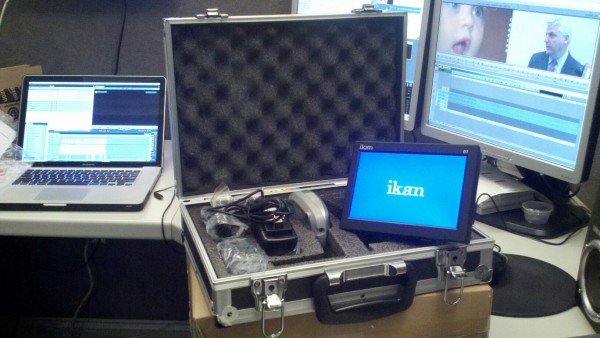
The standard base unit ships with the monitor, AC adapter, DV battery plate and heavy duty cold shoe mount. The Deluxe kit comes with a hard case with foam interior, DV battery, DV battery plate, battery charger, AC adapter and the heavy duty cold shoe mount. ikan also sells a heavy duty replacement battery with a push button life indicator.
I’ve used it for a few weeks now and this is a beautiful 7 inch IPS panel field monitor. The skin tones look great and it has really nice contrast. Even when shooting Canon CLog or BMCC raw, we were able to adjust the brightness, contrast and saturation to give the picture a more pleasing look.
If you purchase the D7w now ikan will throw in a free sun hood. Check with resellers for their current pricing.
Dan’s view:
After seeing the D7w at the NAB 2012 show it went straight to the top of my most wanted list. It seemed to fit my needs perfectly – an IPS (In-plane switching) monitor with waveform and both HDSDI and HDMI loop-thru connectivity in a solid aluminum package. I love its weight and size, perfect for camera top mounting on larger rigs and good for producers or directors to keep an eye on what you are shooting.
The IPS panel is beautifully detailed and colours seem much more accurate than on my previous monitors. No matter how much I tried to calibrate the image on my old SmallHD DP6 it never seemed to be quite realistic. Consistency of colour and brightness from different viewing angles is also very good on the D7w. It will be interesting to compare the D7w against the newer OLED monitors from SmallHD, as I hope to do in the near future.
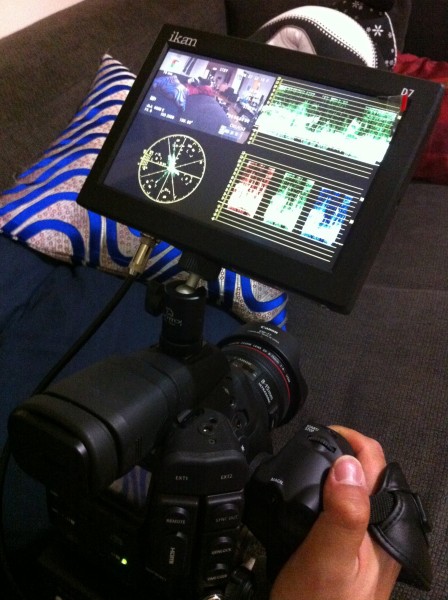
False colour and peaking work as they should and DSLR scaling is also there if you want to use a 5DmkII.When shooting with a Log profile on my C300 I do wish the D7w had a built in look up table (LUT) like some high end monitors; maybe this is something we will see in the future as Log shooting becomes far more common. You can add a bit of colour and contrast to the D7w to give you a better idea of what is going on, but I tend to rely on waveform monitoring instead. Producers and directors do prefer to see an image with more punch in my experience though.
Power options on the D7w are great. You can get an interchangeable battery plate for most common camera battery types including the popular LPE-6 battery from the 5DmkII. It is however only a single battery and there is no hot swap option like the dual battery plate on the SmallHD range. There is also a DC input on the side which I use to power the monitor from Swit’s excellent S-8845 which powers my C300. This is great because the one battery can power both camera and monitor for an entire shoot.
If I am being very picky there are a few things I don’t like about the D7w. Firstly, the time it takes to switch between HDMI and SDI inputs is simply too long; frustrating when you don’t know which input you are on and are trying to select the right one. I found the placement of the SDI connection on the corner of the monitor was a little too exposed. I’ve not damaged it but I wouldn’t want to accidentally knock the monitor with a SDI cable attached. I also don’t like the silver buttons, which I think look a little ‘cheap’ – I would have preferred recessed black ones with a more positive feel.
I would also like to see an audio level meter on the monitor – useful for users of the Blackmagic cinema camera or if you are watching a clean SDI feed out of an external ProRes recorder. Maybe this can be added in a firmware upgrade?
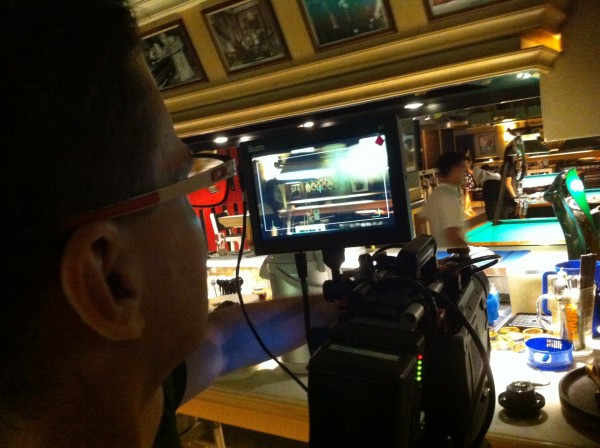
But these are minor niggles on what is an excellent piece of field kit. I have now used it with multiple cameras; DSLRs, C300, F3, Kinefinity S35 and big broadcast cameras. It has worked well every time. Having an accurate way to judge exposure on cameras without built in waveform is a major plus and I thoroughly recommend it.
I like this monitor enough for it to replace the DP6 as my standard ‘kit bag’ monitor – praise indeed.
You can find out more about the Ikan monitor range here.
About DP/Director and photojournalist Rick Macomber:
Rick is the winner of four Emmy Awards, nominated for eight Emmys in Videography and Editing and ten time first place winner for the Boston Press Photographers’ Association. His coverage of the Cambodian refugee camps in Thailand for CBS Boston has won him a prestigious Boston Press Photographers “Best of Show” award. Rick has also covered major breaking news stories around the globe including 9-11 from Ground Zero in NYC and the 50th Anniversary of D-Day from the beaches of Normandy, France.




